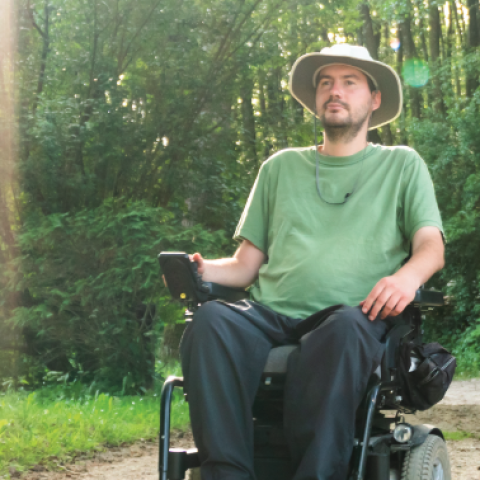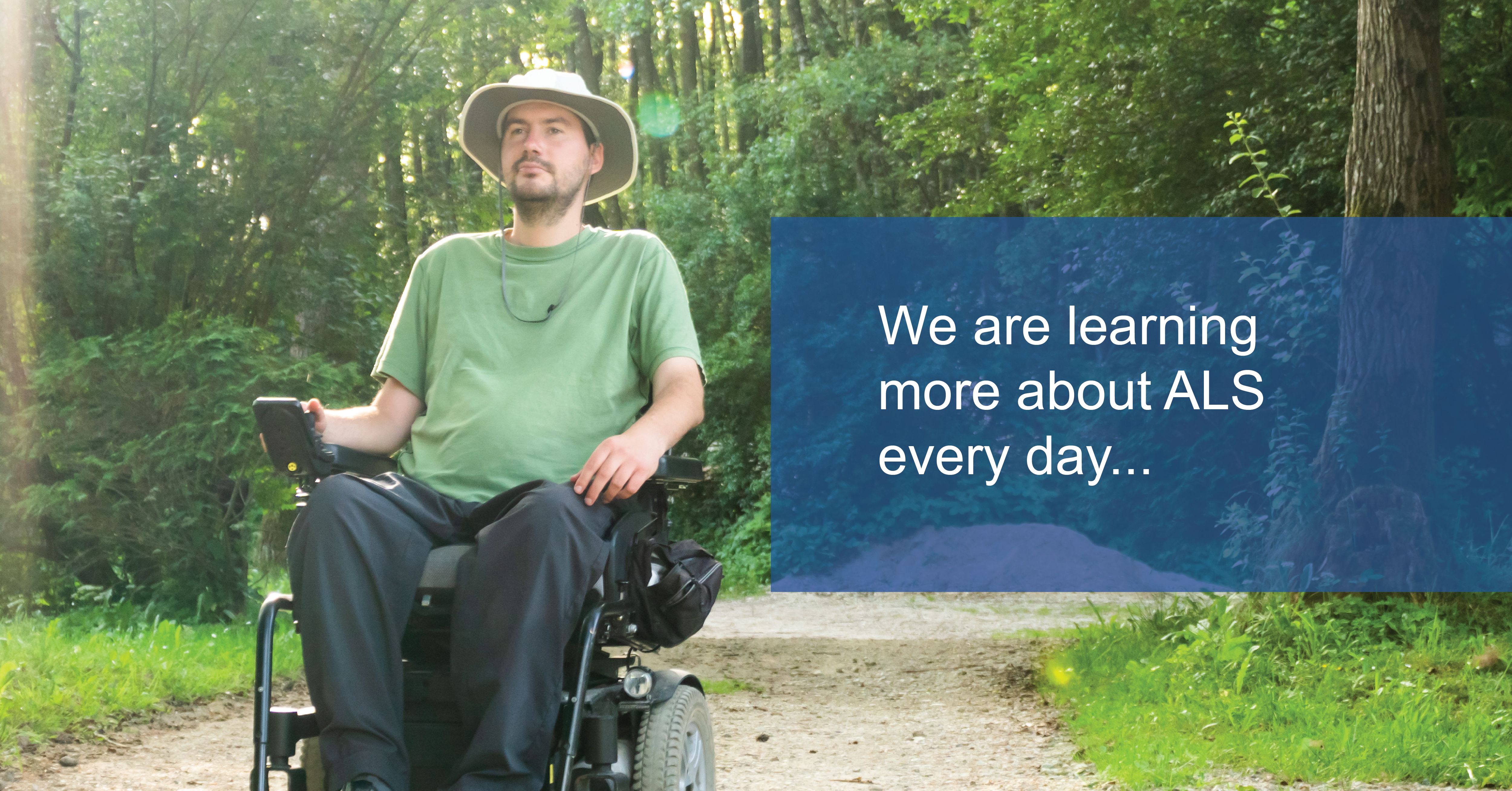Advancements in ALS Research and Assistive Technology Give Hope for A Brighter Future
11/03/2022
By definition Amyotrophic Lateral Sclerosis (ALS) is a progressive neuromuscular disease. But to the 30,000 people in the US living with the disease and their families, the daily struggle of living with ALS is so much more than these words can convey. Receiving an ALS diagnosis is and always will be life-altering news, but with increased societal awareness, new research into the cause and management of the disease, and advancements in assistive technology, there is hope for a brighter future.
Developments in ALS Awareness and Research
People across the world have come together recently to help raise awareness for this disease and fund research. Anyone with a social media account remembers the “Ice Bucket Challenge” that made ALS a household word and raised over $115 million in 2014.
The military community has been particularly affected by this devastating disease. Veterans are about twice as likely to develop ALS as the average American civilian1, but many military members are unaware of their increased risk.
Chris Mulholland, a former U.S Marine, was diagnosed with ALS in 2020. Since his diagnosis, he has worked tirelessly to raise awareness of the prevalence of ALS in retired military members. Now, through continuous outreach programs like those spearheaded by Mulholland and others, ALS continues to remain at the forefront of people’s minds, nearly 10 years after the Ice Bucket Challenge has ended.
Thanks to this increased awareness and subsequent funding, scientists are learning more about ALS every day. We now know more details than ever about this disease. Each discovery helps us take one step forward in finding a cure.

In 2021, research identified the unique molecular structure of the protein associated with ALS (and other neurodegenerative diseases) for the first time.2 This breakthrough should open the door for development of targeted diagnostic and treatment methods, both for ALS and other related diseases.
A type of mesenchymal stem cell therapy (which is currently undergoing clinical trials) has also shown early promise for slowing the disease progression. “Among the 19 patients given at least one treatment, 13 experienced an overall reduction in their progression rate of over 25%....”3
Assistive Technology Making a Daily Difference
While research into the cause and potential cure for ALS continues to make great strides, there is still a long way to go before the research findings become treatment solutions. For many living with ALS, assistive technology makes an immediate difference in daily life.
There is a piece of assistive technology undergoing research that not long ago seemed like something only possible in a science fiction film. In 2021, researchers at Stanford University working with a brain computer interface (BCI) observed a person completely paralyzed from the neck down “type” at a rate of about 90 characters per minute. “These speeds are comparable to able-bodied smartphone typing…”4, meaning that not only was this individual able to communicate digital messages without the use of their hands, but they were able to do so at a normal speed.
As promising as the technology in this study is, it is important to recognize that most ALS patients do not have access to these innovations – at least not yet. So, it is often simple technology, available now, that offers the greatest improvement in daily life.
One simple product that is popular within the ALS community is a powered toilet lift. This piece of assistive technology allows users to have greater independence in the bathroom while also reducing physical burden on caregivers, especially as muscle strength declines.
There are a few different companies that make these types of lifts, but LiftSeat is the only one that also offers a bidet option for hands-free cleaning. LiftSeat also has a few other features that make it an ideal choice for individuals with ALS:
- As needs change, the LiftSeat can be modified for both bathroom and bedside use
- To give greater flexibility for users and caregivers, the LiftSeat offers hand or foot-operated controls
- Transferring from wheelchair to toilet is easier with a retractable handlebar option
Organizations like Compassionate Care ALS work to assist ALS families in getting assistive technologies like LiftSeat.
Staying Up to Date on the Latest Advancements
There are several organizations at the forefront of the fight to cure ALS. The ALS Association has made great strides since the Ice Bucket Challenge, citing, “The $115 million in donations raised through the 2014 ALS Ice Bucket Challenge spurred a massive increase in The ALS Association’s capacity to invest in promising research, the development of assistive technologies, and increased access to care and services for people with ALS.”5
Anyone looking for the latest information on ALS research, support, or ways to get involved, should visit the ALS Association website at www.als.org. There is a still a long road ahead, but each donation helps lead to positive developments for everyone impacted by this disease.
References:
1. Mulholland, C. (2021, October 28). ALS is killing veterans. Military Times. Retrieved February 23, 2022, from https://www.militarytimes.com/opinion/commentary/2021/10/28/als-is-killing-veterans/
2. Henderson, E. B. (2021, December 9). Scientists determine structure of the molecule associated with ALS for the first time. News Medical Life Sciences. Retrieved February 23, 2022, from https://www.news-medical.net/news/20211209/Scientists-determine-structure-of-the-molecule-associated-with-ALS-for-the-first-time.aspx
3. Maia, M., PhD. (2021, December 6). Stem Cell Therapy Safe, Shows Potential to Slow Progression in Trial. ALS News Today. Retrieved February 23, 2022, from https://alsnewstoday.com/news-posts/2021/12/03/mesenchymal-stem-cell-therapy-safe-potential-slow-als-progression-trial/
4. Willett, F. R., Avansino, D. T., Hochberg, L. R., Henderson, J. M., & Shenoy, K. V. (2021). High-performance brain-to-text communication via handwriting. Nature, 593(7858), 249–254. https://doi.org/10.1038/s41586-021-03506-2
5. ALS Ice Bucket Challenge Commitments. (n.d.). ALS Association. Retrieved February 23, 2022, from https://www.als.org/ice-bucket-challenge-spending
This content is not intended to be a substitute for professional medical advice, diagnosis, or treatment. Always seek the advice of your physician or other qualified health provider with any questions you may have regarding a medical condition.